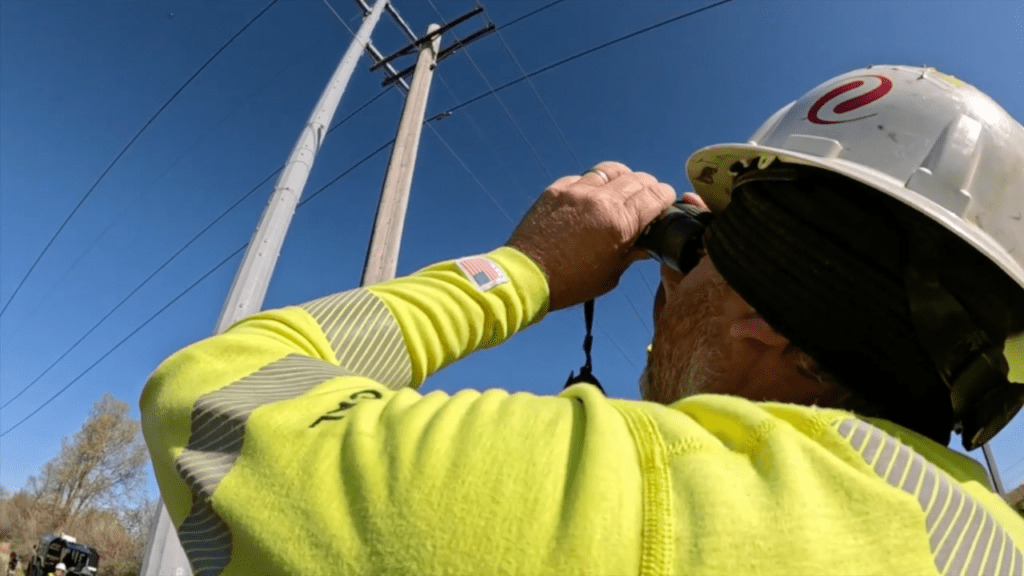SAFETY ON THE LINE: Xcel responds to growing wildfire risk. But experts say it can’t be done alone.
For the first time ever, Minnesota-based Xcel Energy took an extreme step this year to prevent its power lines from sparking a wildfire: the utility purposely turned off power to some customers in parts of the country.
And it’s not ruling it out here in Minnesota due to the growing risk of wildfires.
“It will always be in our toolbox,” said Michael Lamb, Xcel’s Senior Vice President of Distribution and Gas.
That new tool, along with ramped-up pole inspections, drone use, and AI, are among the ways Xcel Energy says it’s responding to the threat it has seen firsthand.
In February, the largest wildfire in Texas history, the Smokehouse Creek Wildfire, burned more than a million acres in the state, wiping out homes and businesses and claiming two lives.
In a recent interview with 5 INVESTIGATES, Lamb acknowledged that Xcel’s equipment contributed to the cause of the fire.
“We’re taking that very seriously. And quite honestly, I’m proud of us for coming forward and saying that,” he said.
But Lamb disagrees the utility was negligent, as alleged in lawsuits coming out of Texas.
That historic wildfire is just the latest example of the pressure on utility companies to adapt to the costly and potentially deadly threat that experts say is only getting worse.
“The trend is toward weather patterns that are hotter, drier and less predictable,” said David Pomerantz, Executive Director of the Energy and Policy Institute of California. His watchdog organization tracks how utilities respond to the growing threat.
While Pomerantz says the burden remains on the utility to stop its equipment from sparking a blaze, he believes state regulators also play a critical role.
In Minnesota, the Department of Commerce has the authority to investigate and issue violations if utilities fail to meet federal standards.
After weeks of asking, a spokesperson acknowledged the commerce department has never launched a single investigation or issued a violation in the last decade.
The Department of Commerce – and three other state agencies involved in overseeing utilities and wildfire mitigation – all refused on-camera interviews and instead suggested asking the federal government.
“State regulators are the first and really only line of defense to make sure that utilities are operating their systems safely,” Pomerantz said. “That’s why regulatory scrutiny is so important.”
Adapting to the Threat
Here in Minnesota, Xcel Energy recently granted 5 INVESTIGATES rare access to its field crews and secure command center in downtown Minneapolis to show the changes it says it implemented to its system to prevent a wildfire.
“We’re aware of the added hazard,” said David Berklund, the company’s regional vice president. “We’ve just added that to the scope of our work.”
On any given day, inspection crews are on patrol checking the more than 600,000 power poles that dot the Minnesota horizon.

They’re looking for any signs of decay, cracks, or other hazards that could cause a pole to fail. The utility now deploys drones with high-tech cameras that can find problems not visible to the human eye.
“It’s all about being able to react nimbly to what we find on these inspections, so we’re building a database,” Berklund said.
Meanwhile, workers at the command center utilize a new screen to monitor wildfire conditions in real time.
Starting this year in the region, if conditions are prime for a fire, Xcel says it will turn the system into what it calls a “Wildfire Safety Setting.”
The special mode means the system will shutdown if anything touches a power line. Under normal conditions, the system automatically resets – meaning customers may only notice their lights flicker.
Xcel has used the feature more than 15 times this year due to the risk. The utility will also now consider turning off power to customers during extreme conditions – a proactive approach used for the first time ever this year in Texas and Colorado.
“This is a evolving risk that our regulators are policymakers and our customers are on this journey with us. And the more people understand the nature of this risk, the better,” Lamb said.